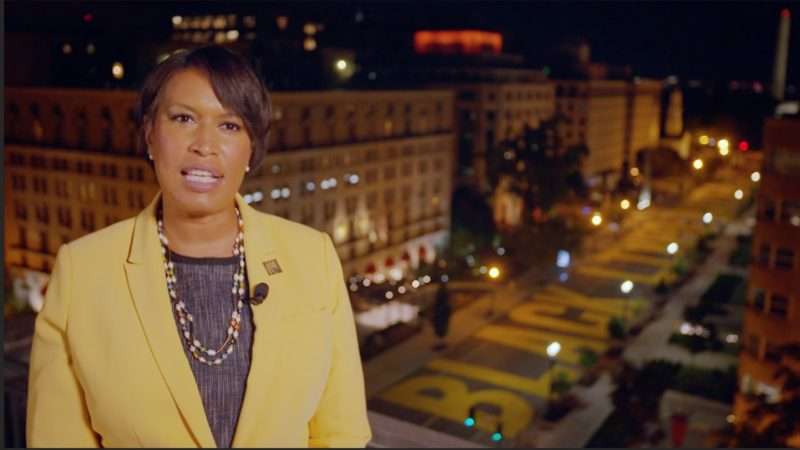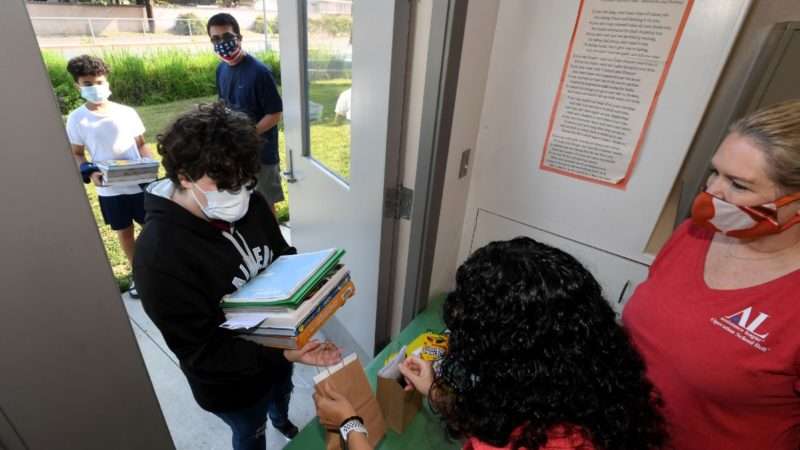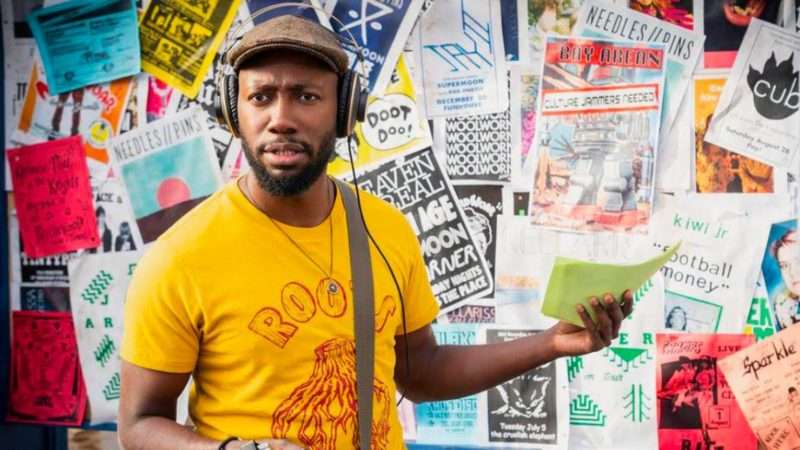Please enjoy the latest edition of Short Circuit, a weekly feature from the Institute for Justice.
In 2018, the town of Gibraltar, Wisc., banned food trucks after a family started vending on their own property outside their store. After IJ challenged that ban, the town replaced it with a new ordinance prohibiting food trucks from areas where brick-and-mortar restaurants operate. Unconstitutional economic protectionism? This week we got our answer: “I can reach no other conclusion than these ordinances look, swim, and quack like efforts to unfairly discriminate against mobile food establishments in favor of brick-and-mortar restaurants in downtown Fish Creek in the Town of Gibraltar.” Click here to learn more.
- Congress has the inherent power to issue subpoenas, but, says two-thirds of this D.C. Circuit panel, it has failed to pass a law giving it the power to have courts enforce those subpoenas, meaning the House of Representatives cannot sue to enforce its subpoena of former White House Counsel Don McGahn.
- The District Attorney of Middlesex County, Mass., may have lost her challenge to the federal government’s practice of arresting noncitizens in state courthouses. But she has joined the surprisingly lengthy roster of litigants whom First Circuit Judge Selya has compared to or contrasted with Rumpelstiltskin. So there’s that.
- Members of New York’s 10th Street Gang, seeking revenge on rival 7th Street Gang, gather guns and go looking for trouble. Shooting breaks out and two innocent bystanders are killed. A member of the gang—convicted of aiding and abetting the murders by lending a .44 caliber handgun to another member—challenges the sufficiency of the evidence against him. Second Circuit: And he wins. It’s undisputed that the .44 malfunctioned and didn’t fire. No actus reus, no crime.
- Syrian man is involuntarily conscripted into the militia, where he undergoes basic training, performs guard duty, and does errands for superior officers. He flees to the United States, where he seeks asylum on the ground that he will be tortured if returned to Syria. Feds: We consider the government militia you were forced to join to be a terrorist organization, and we don’t grant asylum to terrorists. Third Circuit: That’s right. (Fortunately, he received a more restrictive “deferral of removal” under the Convention Against Torture.)
- Does New Jersey’s ban on large capacity magazines violate the Second Amendment? Third Circuit: We already decided that it does not when we denied the plaintiffs’ motion for a preliminary injunction, so we’re bound by the law of the case and cannot reconsider. Dissent: Prudential doctrines shouldn’t trump constitutional rights.
- Third Circuit: Pennsylvania man, who is African American, provides a ride home to a woman who states she is afraid of her drunk, abusive boyfriend. And with good reason. Upon arrival, the boyfriend hurls racial epithets, brandishes a knife, threatens to “chop up” the girlfriend, and jumps on the hood of the moving car. The terrified driver calls 911, who instruct him to convey his interior/exterior passengers to a police checkpoint. Naturally, the driver is arrested on suspicion of drunk driving, despite passing a breathalyzer test, and is charged with multiple…y’know what, just grab a stiff drink and read the case.
- Does keeping a death-row inmate in solitary confinement for 33 years violate the Eighth Amendment prohibition on cruel and unusual punishment? Third Circuit: Going forward? Yes. But qualified immunity in this case.
- Third Circuit: Porno Producers Partially Prevail in Push to Prevent Paperwork Penalties
- Here’s one for the procedure nerds: Partnership sues several pharmaceutical companies as a qui tam relator under the False Claims Act. When one of the partners leaves, that change amounts to the creation of a new partnership. Is the lawsuit now barred by the Act’s first-to-file bar, which prevents a new person from intervening or bringing a related action? Third Circuit: Clever, but no.
- Salvadoran man seeks asylum, alleging that if he is sent back to El Salvador, he will be killed by MS-13 because his sister refused to date a local gang leader. Fourth Circuit: “Like offensive linemen on a football team, standards of review are not glamorous or exciting. But that does not mean they are unimportant.” And under the “substantial evidence” standard, this guy is hosed. Dissent: With their “nonsensical” and “cursory” analysis below, “the agencies left their blind side wide open.”
- The City of Austin allows digitized billboards for “on-premises signs,” i.e., signs that advertise stuff at the locale of the sign, but prohibits digitization of “off-premises signs.” Is this a content-based distinction that violates the First Amendment? Fifth Circuit: It is, notwithstanding Justice Alito’s suggestion in Reed v. Town of Gilbert that such distinctions are content neutral.
- Fifth Circuit: “The United States prosecuted and convicted Thaddeus Beaulieu for felony criminal contempt. The Government concedes that it committed prosecutorial misconduct but asks us to affirm Beaulieu’s conviction anyway. We refuse and instead vacate the judgment.”
- Maximum Security finished first at the 145th running of the Kentucky Derby, but his owners came home without the $1.5 million prize. Racing stewards disqualified the horse for interference. Sixth Circuit: Although the racing stewards are appointed by a government agency, we need not decide whether the procedures they applied comported with due process. The owners had no protected property interest in a prize they had not yet won.
- When an interaction between Black Hebrew Israelites, a Native American activist, and a group of high school students became the story of the hour, Representative Debra Haaland and Senator Elizabeth Warren Fired off some tweets. Almost two years later, the Sixth Circuit affirmed the dismissal of the students’ defamation claims. Because the Congresswomen tweeted their tweets in the course of their government employment, they are protected by sovereign immunity.
- There is no dispute that the defendant—a Catholic school—would be protected from suit by the First Amendment if it had simply fired the plaintiff because of his sexual orientation. But does the First Amendment bar the plaintiff’s claim that the school subjected him to a hostile working environment? No, holds the Seventh Circuit, reasoning that religious employers can control their employees through hiring and firing decisions and need not subject them to abuse.
- Tennessee man, unhappy to discover the Red Cloud Indian School is Catholic, posts a video to YouTube (and sends it to a school administrator) showing him taking a large, machete-like knife to the throat of a stuffed frog and saying he was coming to clean house. He then packs his truck with a machete, handgun, and a 5-foot-long samurai sword and drives the 1,000 miles to the South Dakota school. He’s arrested in the parking lot, convicted of a weapons offense. Sentencing guidelines say 18–24 months; he’s sentenced to 60 months. Eighth Circuit: Which is fine.
- Pro tip from the Eighth Circuit: If you wish to appeal a two-year injunction enforcing a non-compete clause, be sure to try to stay the order so your case doesn’t become moot while your appeal is pending.
- Allegation: TSA screener at Minneapolis–St. Paul airport manhandles man on crutches, causing him to fall and get injured. Can the man sue for battery and negligence? Eighth Circuit (over a dissent): Yes. TSA screening personnel qualify as “investigative or law enforcement officers” under the Federal Tort Claims Act, which means no sovereign immunity and the man’s suit can go forward. (Circuit split watch: The en banc Third Circuit agrees, the Eleventh Circuit disagrees.)
- Four men are convicted of sending $10k to a Somali terrorist group. The feds had tapped one of the men’s phones pursuant to a warrant that relied on info from an NSA program collecting phone metadata in bulk (a program Edward Snowden made public and the NSA no longer has authority to use). Ninth Circuit: There are significant Fourth Amendment concerns here, and the bulk metadata collection violated the Foreign Intelligence Surveillance Act. But we won’t suppress the evidence, and we will affirm the convictions.
- Apple retail-store employees must undergo exit searches at the end of their shifts, which usually take 5–20 minutes to wait for and undergo. Which is time they must be paid for, according to the Ninth Circuit.
- Parents of Hindu children in the California public schools claim that the 6th and 7th grade curricula discriminate against Hinduism. For example, they refer to a sacred text as an important piece of literature in Ancient India and describe Hinduism as a “culture that emerged as a belief system.” Ninth Circuit: The materials “reflect careful crafting … to achieve a balanced portrayal of different world religions.” No constitutional violations here.
- Do speakers have a right to speak from traffic medians? Tenth Circuit: Yes! Concurrence: But maybe not if the median is really narrow.
- University officials: Sure, the plaintiff alleges that we falsely ginned up charges that got him indicted for racketeering, but those charges were dismissed as time barred. He can only sue for malicious prosecution if he beat the charges on the merits! Eleventh Circuit: No, we’re pretty sure he can sue for malicious prosecution anyway.
- Two-thirds of this Eleventh Circuit panel agrees that the Eighth Amendment allows prison officials to take into account the fact that a new Hepatitis C treatment is “really expensive” when deciding whether all prisoners with Hep C will get it immediately.
- Can the son of the former Prime Minister of Albania show a book’s author and publisher had actual malice in depicting him as connected to the “Albanian mafia” as part of a wild story of gun-running later made into a Jonah Hill movie? No way (or, as the Albanians say, jo aspak), says the Eleventh Circuit, in part because of “the many prior published reports” making similar allegations.
- An Alabama man’s attempt to bring a stray dog to a shelter without showing anyone his ID turns into a melee with police officers, multiple tasings, and a final, surprise gunshot. A “gothic story,” says the Eleventh Circuit, in which qualified immunity is unwarranted.
- And in cutting-edge mandamus news, the D.C. Circuit finds that former Secretary of State Hillary Clinton (though not her aide Cheryl Mills) is entitled to a writ of mandamus to prevent her deposition in connection with a FOIA case and (sitting en banc) that former National Security Advisor is not entitled to a writ preventing the district court from holding a hearing about the government’s motion to dismiss his prosecution.
- And in en banc news, the Tenth Circuit has voted to rehear its earlier ruling upholding a federal rule defining bump stocks as illegal “machine guns.” The Ninth Circuit, however, will not reconsider its decision requiring a warrant for most forensic searches of a phone at the border. Six judges dissent, warning that this “makes our borders far more porous and far less safe.”
Friends, earlier this summer, the U.S. Supreme Court granted IJ a victory in Espinoza v. Montana Department of Revenue, holding that states cannot disqualify private schools from a state subsidy program solely because they are religious. This week, IJ filed a new case on behalf of Dennis and Cathy Griffin against the state of New Hampshire, which prohibits so-called “tuitioning towns”—towns that are too small to operate their own schools and instead pay student tuition at nearby private or public schools—from providing assistance to families that wish to send their kids to religious schools. Learn more here.
from Latest – Reason.com https://ift.tt/3gXDdjP
via IFTTT



